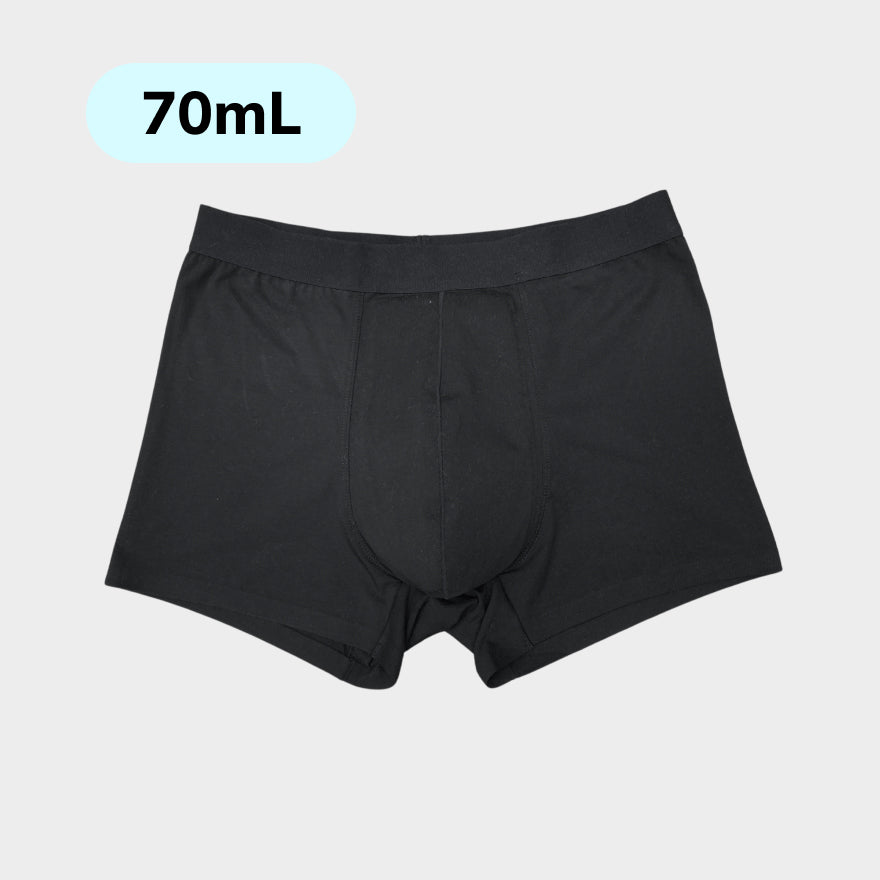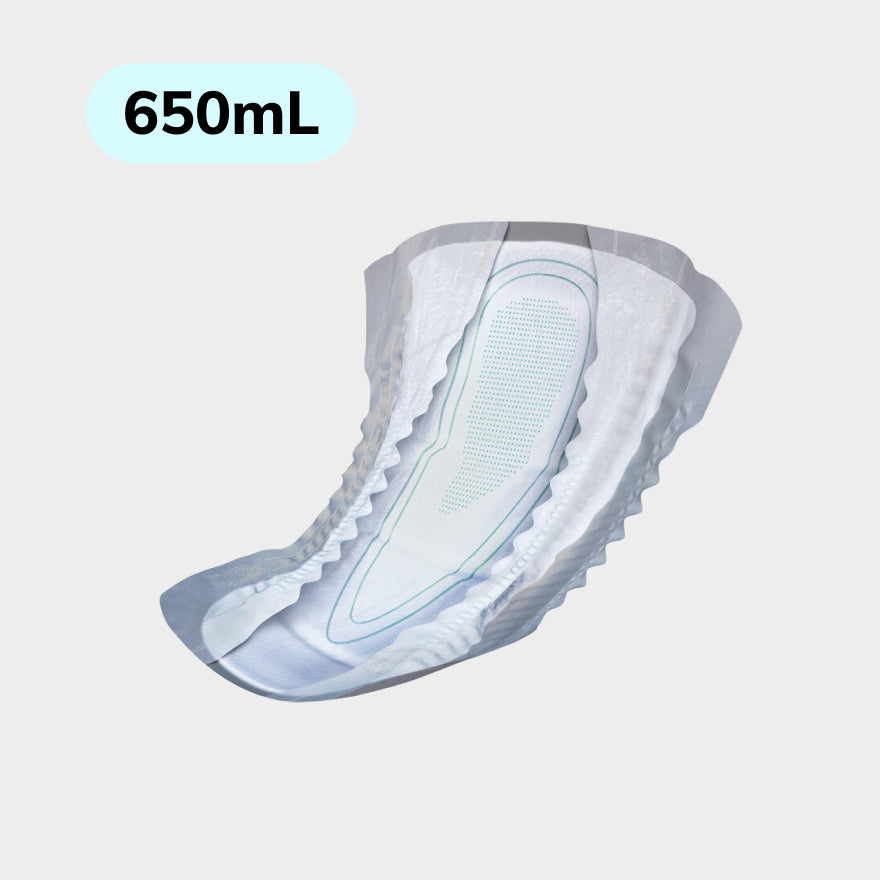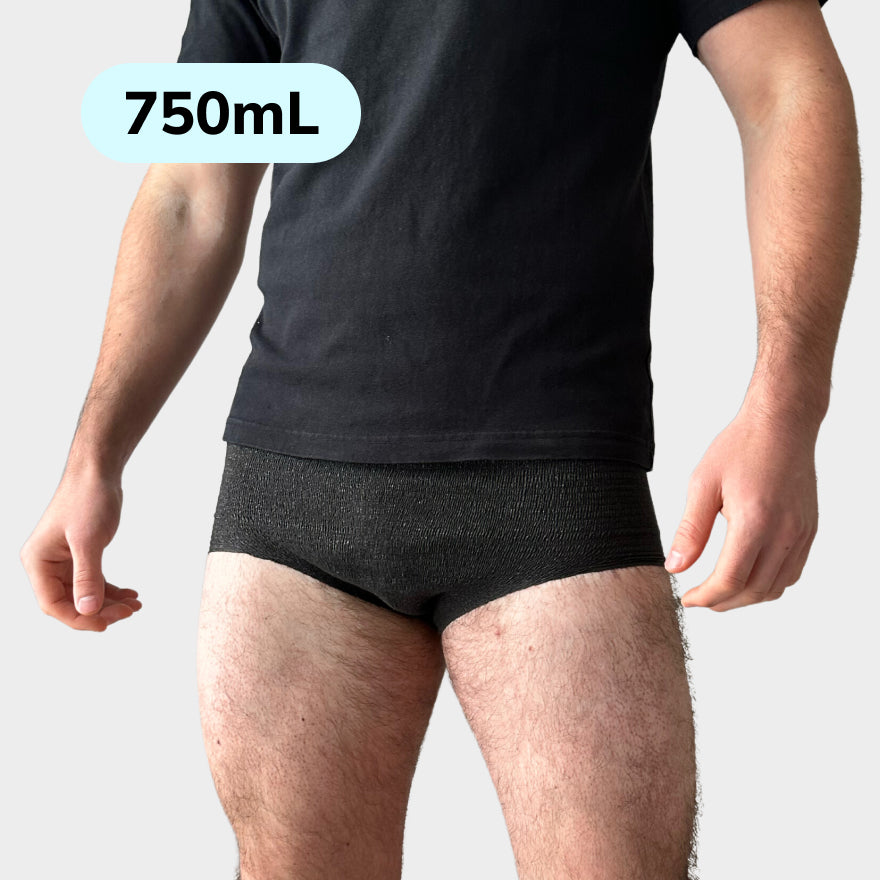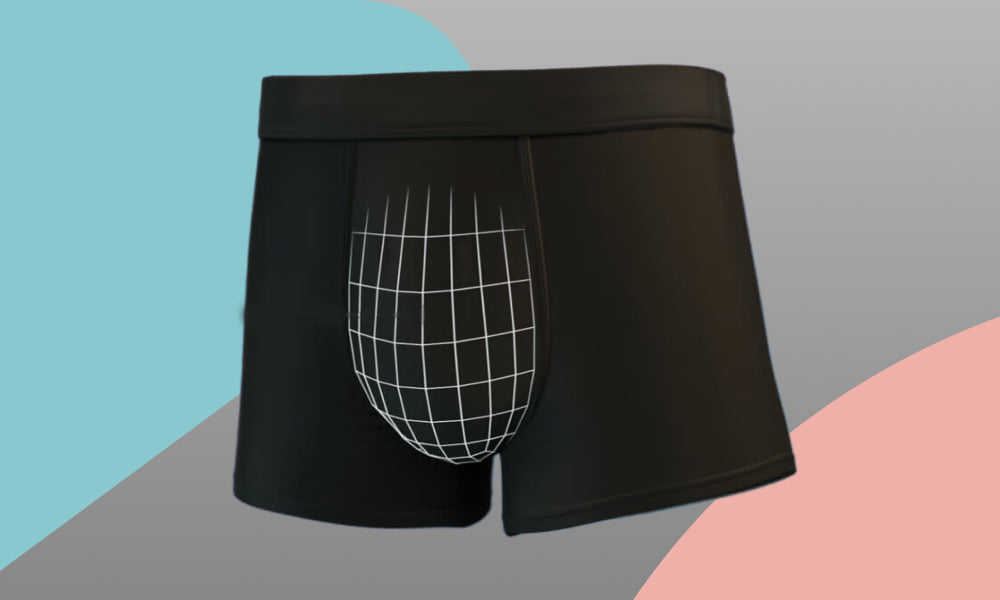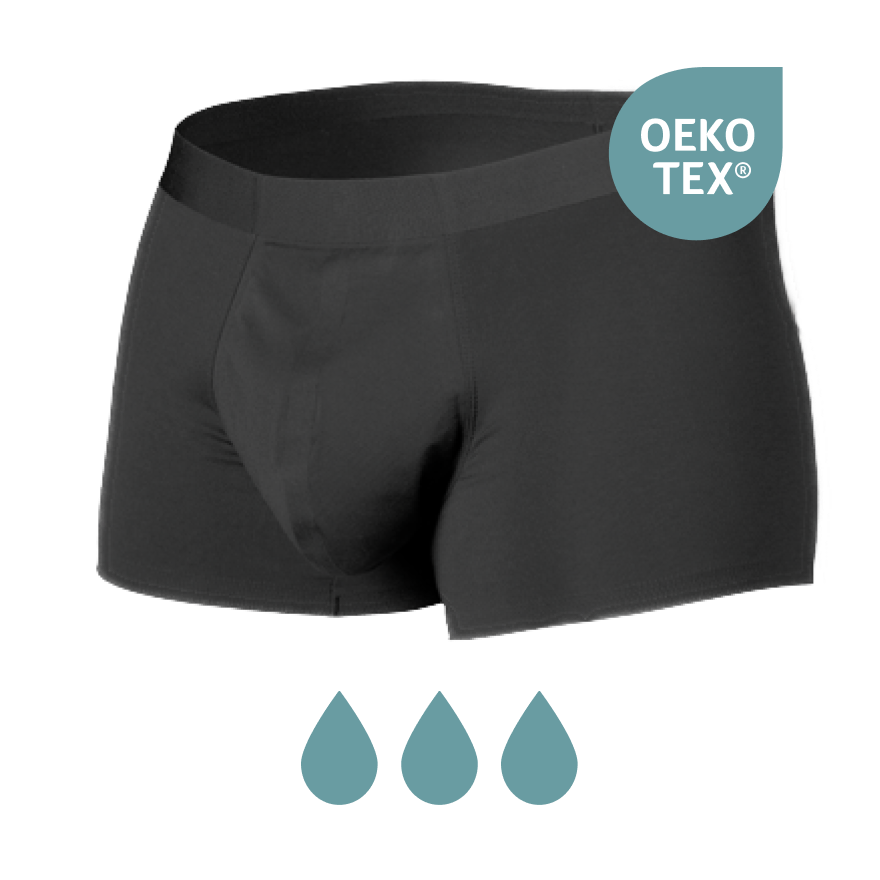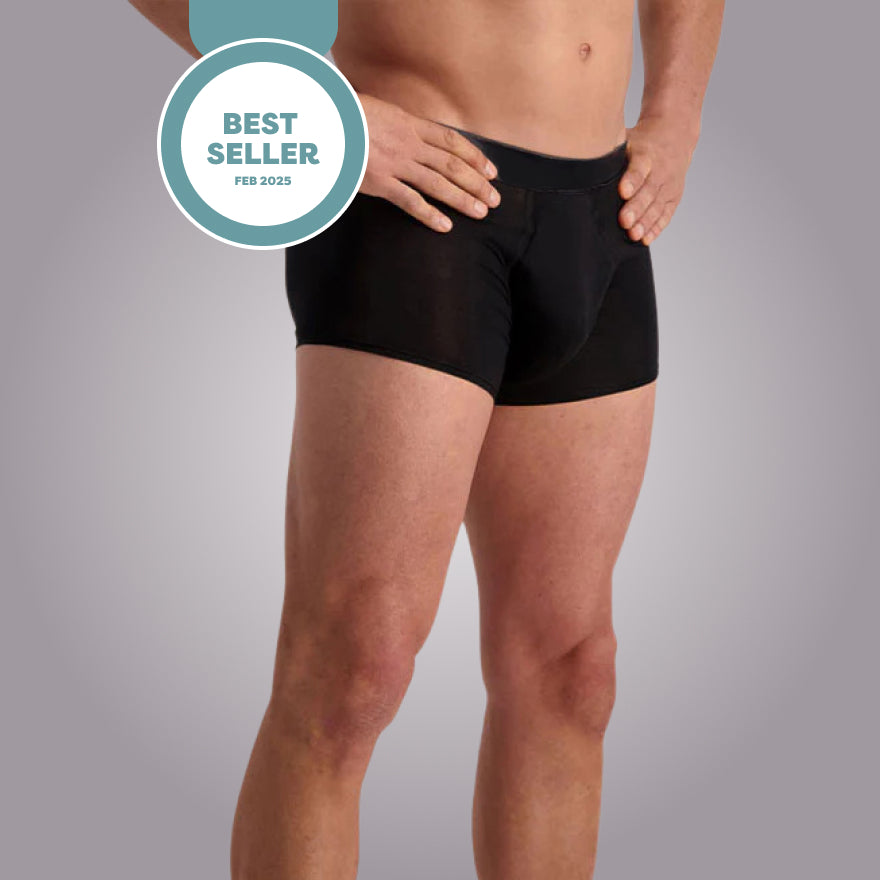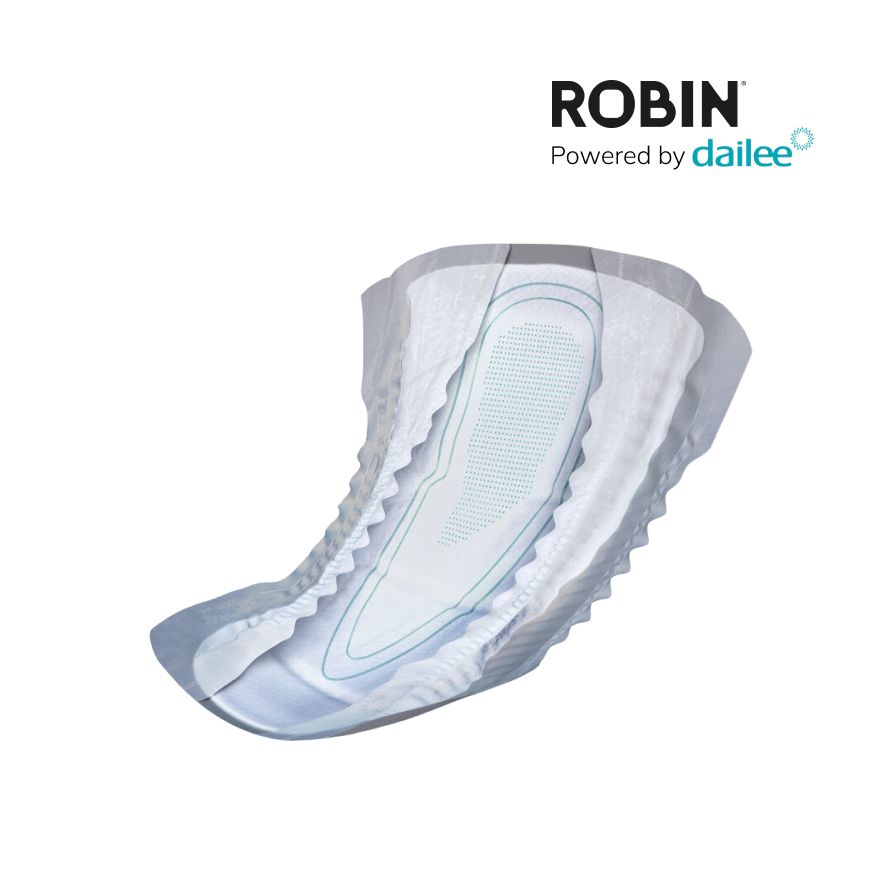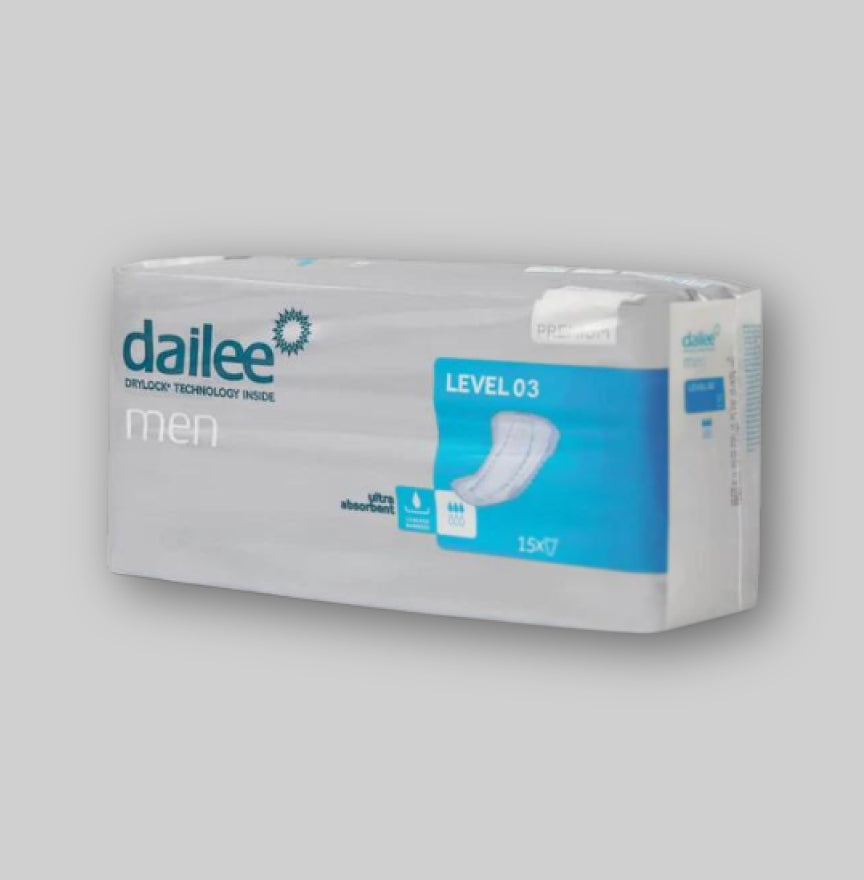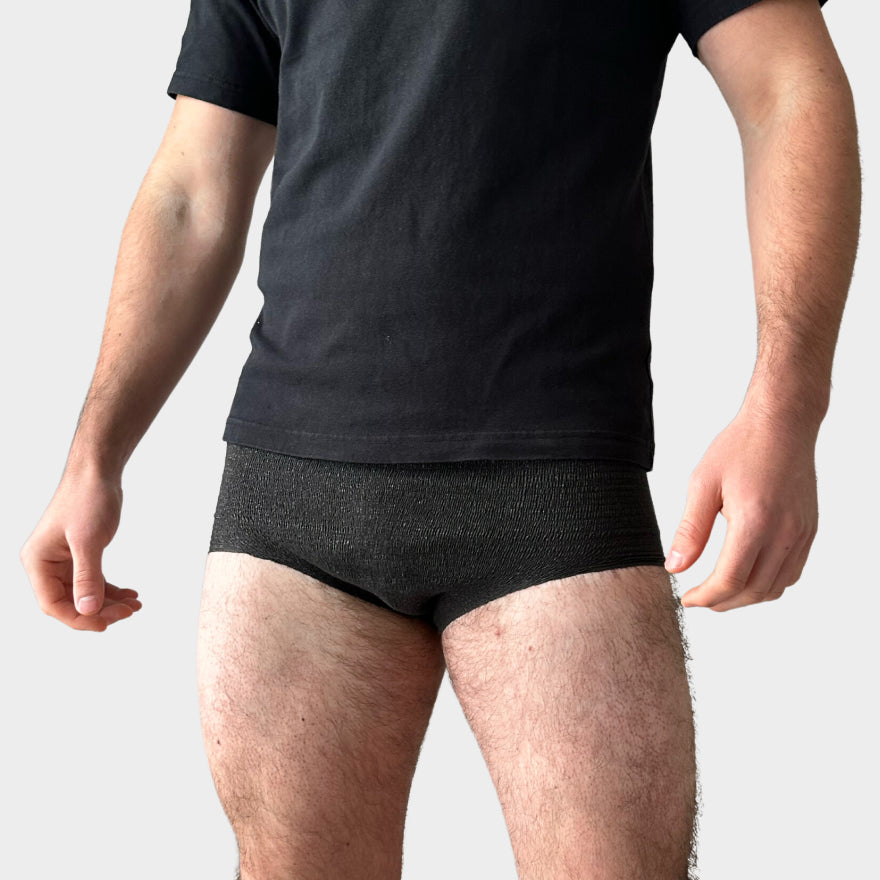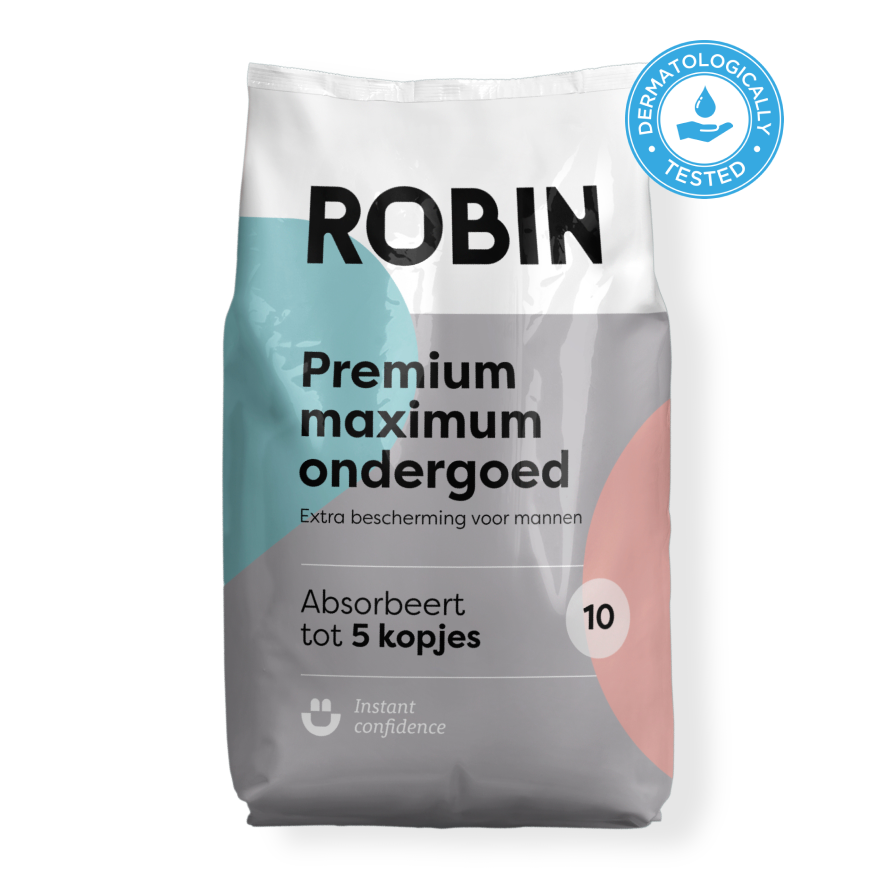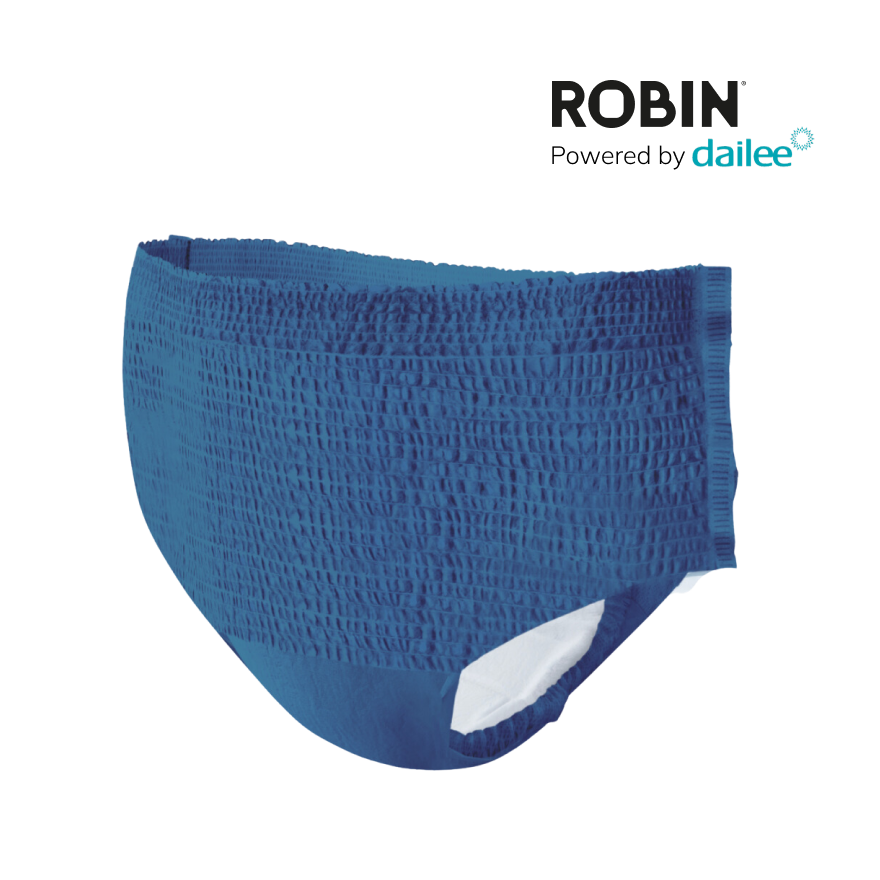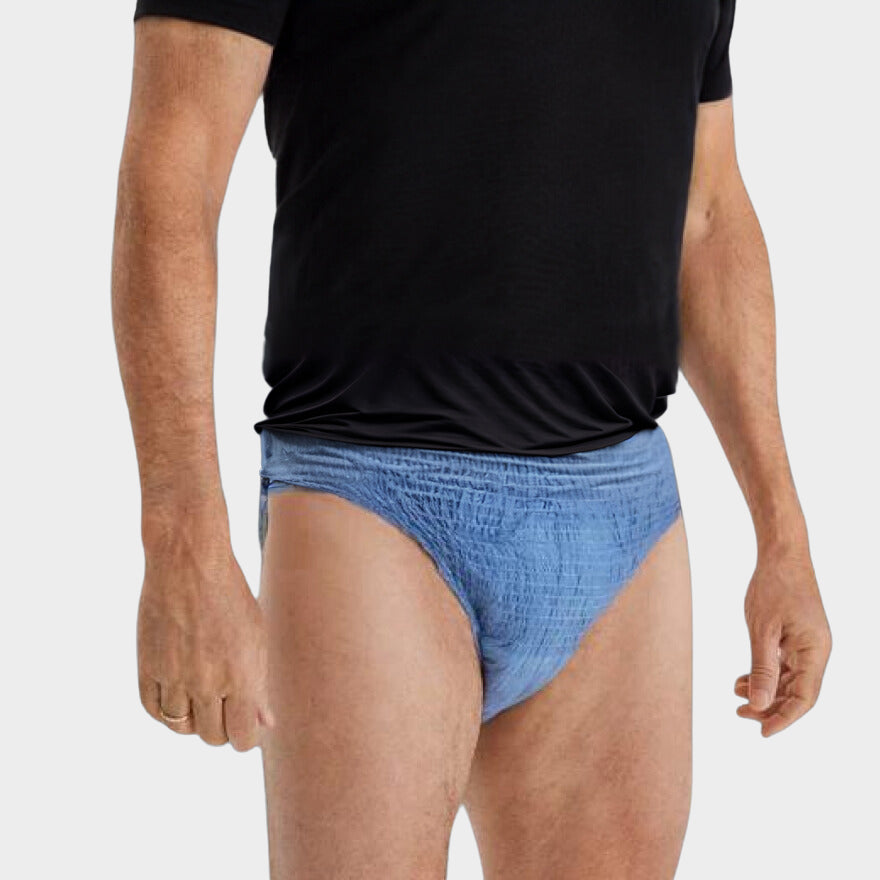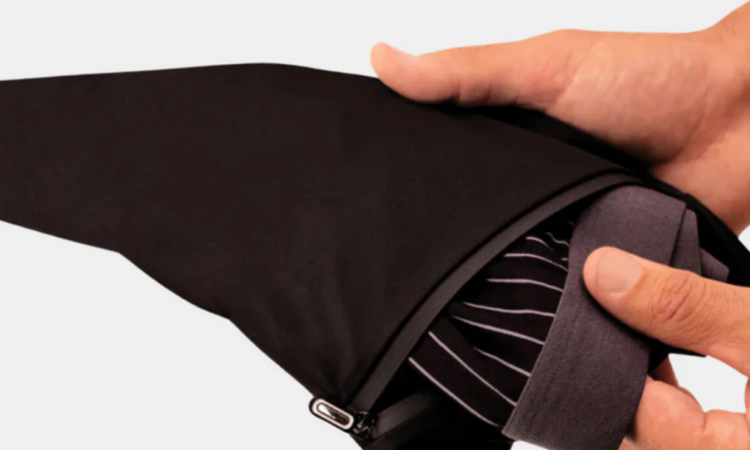Products for disease incontinence are designed to help people with this condition in control of their symptoms. Display incontinence can be caused by various factors, such as age, illness or injury. It can be a challenging and sometimes humiliating condition, but there are various products available that can help control the symptoms and improve the quality of life.

There are different types Products for relief incontinence Available, including inserts, pants and briefs. Inserters are designed to be placed in the underwear of the person and can be used in light to moderate loss of stool. Pants and briefs are designed to be worn as underwear and offer more protection in the event of a heavier loss of stool. These products are available in different sizes and absorption levels, so that people with relief incontinence can find the right product that matches their individual needs.
There are also products available that are specially designed for people with double incontinence, which means that they suffer from both urine and relief incontinence. These products offer protection against both types of incontinence and can help to better control the symptoms. It is important to remember that products for relief incontinence are only part of an overall treatment and that it is important to seek advice from a care provider to find the best treatment options.
What is relief incontinence?

Solesion incontinence is the inability to stop stools. This can vary from the unwanted loss of a little stool to the complete loss of control over the intestines. It is a common problem in adults and can have a major influence on the quality of life.
Disease incontinence different causes have, including Weakened pelvic floor muscles, damaged nerves and intestinal problems such as diarrhea and constipation. It can also occur in people who have had surgery in the pelvic area or in women who gave birth.
There are different types relief incontinence. With passive incontinence, the patient cannot feel the stool coming and loses it without having control over it. Bee Urge incontinence The patient feels a sudden urge to go to the toilet, but he cannot reach it on time. Both forms of incontinence occur with mixed incontinence.
Various products are available to help control relief incontinence, including incontinence species, inserts and pants. These products are designed to prevent leakage and to help the patient feel more secure. It is important to choose the right product based on the severity of the incontinence and the individual needs of the patient.
Causes of relief incontinence

Relief incontinence can be caused by various factors, including:
-
Damage to the pelvic floor muscles: The pelvic floor muscles play an important role in controlling the bladder and intestines. Damage to these muscles can lead to incontinence.
-
Neurological disorders: damage to the nerves that check the bladder and intestines can lead to incontinence.
-
Chronic constipation: Long -term constipation can lead to damage to the pelvic floor muscles and the nerves that control the bladder and intestines.
-
Aging: Aging can lead to weakening of the pelvic floor muscles and a decrease in control over the bladder and intestines.
-
Operations: Some operations, such as operations on the intestines or prostate, can lead to damage to the pelvic floor muscles and the nerves that control the bladder and intestines.
-
Medication: Some medicines, such as diuretics and laxatives, can lead to incontinence.
It is important to find out the cause of the relief incontinence in order to determine the correct treatment. A doctor can perform different tests to determine the cause of the incontinence, such as a rectal examination, an anorectal manometry and a defecography.
Types of incontinence products
With relief incontinence there are different types of incontinence products available to absorb and prevent the loss of stool. Four types of incontinence products are discussed below: absorbent products, barrier products, reception products and skin care and protection.
Absorbent products
Absorbent products are designed to absorb and retain liquids, such as urine and stools. These products are available in different sizes and absorption capacities. Inserters, pants and briefs are examples of absorbent products that are suitable for relief incontinence.
Barrier products
Barrier products are used to protect the skin against stools and urine. These products are usually used in combination with absorbent products. Barrier products can come in the form of creams, ointments and sprays. They often contain zinc oxide and/or dimethicon to protect the skin.
Reception products
Reception products are designed to absorb stool before it leaves the body. These products are usually used in people who have no control over their intestinal movements. Reception products are available in various sizes and absorption capacities. Examples of reception products are stoma bags and anal tampons.
Skin care and protection
Skin care and protection is important in relief incontinence. The skin can be irritated by contact with faeces and urine. It is therefore important to keep the skin clean and dry. In addition, skin care products such as creams and ointments can help protect and restore the skin.
It is important to choose the right incontinence product that fits in with the individual needs of the person with relief incontinence. It is recommended to request advice from a healthcare provider or expert to choose the right product.
Criteria for product choice

When choosing a Suitable Incontinence Product For relief incontinence there are various criteria that must be taken into account. Below you will find some important factors to consider:
-
Absorption power: The absorption capacity of the incontinence product is an important factor in choosing the right product. With relief incontinence it is important to opt for a product with a high absorption power, so that the product can absorb sufficient relief and prevent leaks become.
-
Fit: A well -fitting incontinence product is essential for preventing leaks. With relief incontinence it is important to opt for a product that fits well with the body. This can be, for example, pants, slip or hip band system.
-
Barrièreranden: Incontinence products for relief incontinence often contain raised edges, also known as barriers, with extra space to absorb stool. It is important to opt for a product with barriers to prevent leaks.
-
Material: Incontinence products are available in various materials, such as cotton, polyester and plastic. With relief incontinence it is important to opt for a product that is comfortable and does not cause irritation. Cotton products are often softer and less irritating than plastic products.
-
Price: Incontinence products are available in different price ranges. It is important to opt for a product that fits within the budget, but that also meets the other criteria. It is not always the case that more expensive products are better than cheaper products.
By taking into account these criteria, you can choose a suitable incontinence product that is comfortable and prevents leaks.
Use and replacement of products
With relief incontinence there are various products available that can help with absorbing stool. It is important to use the right products and replace them in the right way to prevent discomfort and unwanted odors.
Inserts
Inserts are suitable for light to moderate relief incontinence. It is important to choose the right size insert to prevent leakage. Inserters must be replaced regularly to prevent them from leaking or causing unwanted odors. It is advisable to wear inserts in combination with tight underwear to prevent them from shifting.
Slips
Slips are suitable for moderate to heavy relief incontinence. It is important to choose the right size slip to prevent leakage. Slips must be replaced regularly to prevent them from leaking or causing unwanted odors. It is advisable to wear briefs in combination with sleek undergarments to prevent them from shifting.
Pants
Pants, also known as diaper pants, are suitable for moderate to heavy relief incontinence. It is important to choose the right size of pants to prevent leakage. Pants must be replaced regularly to prevent them from leaking or causing unwanted odors. It is advisable to wear pants in combination with tight underwear to prevent them from shifting.
Tips
- It is important to choose the right size product to prevent leakage.
- It is advisable to wear inserts, briefs and pants in combination with tight underwear to prevent them from shifting.
- Products must be replaced regularly to prevent them from leaking or causing unwanted odors.
- It is advisable to use a irrabasorbaging product to prevent unwanted odors.
Lifestyle and self -management

In addition to the use of incontinence material, there are also other ways in which people with relief incontinence can control their symptoms. A healthy lifestyle can, for example, help to reduce the frequency and severity of unwanted relief loss.
Power supply
A healthy diet can help to reduce the symptoms of relief incontinence. People with relief incontinence can consider eating fiber -rich foods such as vegetables, fruit, whole -grain bread and grains. Fiber -rich food can help to make the stool thicker and improve bowel movements.
On the other hand, certain foods can aggravate the symptoms of relief incontinence. People with relief incontinence are advised to avoid high -rich food, alcohol, coffee, soft drinks and seasoned food.
Toilet habits
Good toilet habits can also help to reduce the symptoms of relief incontinence. For example, people with relief incontinence can try to go to the toilet at set times and empty their intestines. It is also important to take the time to fully relieve and not squeeze.
Self -management
In addition to a healthy lifestyle and good toilet habits, there are also other ways in which people with relief incontinence can control their symptoms. For example, it is important to practice regularly to strengthen the pelvic floor muscles. This can be done with the help of pelvic floor exercises, which can be learned from a physiotherapist.
People with relief incontinence can also benefit from keeping a diary in which they keep their symptoms and incontinence episodes. This can help to identify patterns and understand which factors worsen the symptoms.
Professional advice and support
Display incontinence can be a challenging condition, but there are many professional sources available to help people find the right products and treatments. Here are some tips for finding professional advice and support:
-
Talk to your doctor: Your doctor can refer you to a specialist who specializes in treating relief incontinence. A specialist can help you find the right products and treatments for your specific situation.
-
Search online for information: there are many reliable sources available online, such as the stomach liver intestine foundation and Abena, which offer information about relief incontinence and the various treatment options.
-
Talk to other people with relief incontinence: it can be useful to talk to other people who have the same condition. You can find online support groups or ask for referral to local support groups with your doctor.
-
Consider an appointment with a continuous nurse: Continent nurses are specialized in the treatment of incontinence and can help you find the best products and treatments for your specific situation. Your doctor can refer you to a continuous nurse in your area.
Finding professional advice and support can help you find the right products and treatments to manage your relief incontinence. It is important to remember that you are not alone and that there are many sources available to help you.
Reimbursements and costs

People with relief incontinence can be eligible for reimbursement of incontinence material from the basic insurance. The Reimbursement for incontinence material Can differ per health insurer. With most health insurers, such as CZ and Menzis, incontinence materials are eligible for reimbursement from the basic insurance if all conditions are met.
The basic insurance reimburses the costs of incontinence material above the deductible. A mandatory deductible of at least € 385 applies to the basic insurance. This can voluntarily be increased by € 500 to a maximum deductible of € 885. It is important to know that the costs of incontinence material that fall under the deductible must be paid by itself.
In most cases a personal contribution applies to medicines and operations in relief incontinence. In some cases it can be easy and cheaper to buy incontinence material yourself in the supermarket, drugstore or online. However, it is important to know that the quality and fit of these products can vary and may not be optimal for the individual needs of the patient.
It is therefore advisable to buy the incontinence material from a reliable supplier with knowledge and good service. The Continence Center and Abena are examples of reliable suppliers of incontinence material.
Innovations and future developments
There are various innovations and future developments in the field of products for relief incontinence. Some of these developments are described below.
Smart incontinence material
Smart incontinence material is an innovative solution for relief incontinence. This material is equipped with sensors that send signals when it is time to replace the material. This allows the incontinence material to be replaced on time and the risk of skin irritation and infections is reduced. KPMG has conducted research into smart incontinence material and concluded that it is one of the digital solutions that can improve the disabled and elderly care.
Biodegradable incontinence material
Biodegradable incontinence material is a sustainable solution for relief incontinence. This material is made of biodegradable materials and can be broken down after use. It is an environmentally friendly alternative to traditional incontinence material.
Electronic bowel meter
An electronic bowel meter is a device that measures and analyzes the bowel movements of a person. The device can measure the quantity and consistency of the bowel movements and can detect any changes in the bowel movements. This can help identify digestion problems and can be used to improve the treatment of relief incontinence.
New materials
There is constant research into new materials for incontinence material. These materials are designed to offer better protection against leaks and to improve the comfort of the wearer. Some of these materials are also designed to better protect the skin against irritation and infections.
Conclusion
Innovations and future developments in the field of products for relief incontinence offer new opportunities to improve healthcare. Smart incontinence material, biodegradable incontinence material, electronic bowel meters and new materials are some of the developments that can improve the quality of life of people with displeasure incontinence.
